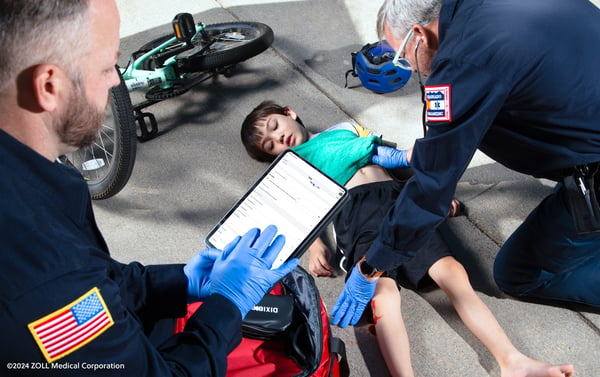Chart Smarter: Why One EMS Agency Ditched Paper for Mobile Tech
Are Your Key Performance Indicators Costing You Money? (Part 1)
Co-written by Scott A
Was this information valuable?

Co-written by Scott A. Moore, Esq., Principal, Moore EMS Consulting LLC
A Critical Look at How Common KPIs Are Being Used (or Misused) by Ambulance Billing Offices
(7 min read) The EMS industry faces an increasingly challenging reimbursement environment. At its core, the problem is that our reimbursement rates have failed to keep pace with the increased costs of furnishing high-quality emergency medical care. This has long been true for federal healthcare programs, such as Medicare and State Medicaid Programs. This is also increasingly the case in the commercial insurance markets. At the same time, the health insurance markets have become increasingly fragmented, with more and more plans being offered every year. Each of these plans has their own rules on when and what they will pay. On a macro level, the entire healthcare industry is also transitioning away from fee-for-service models that reward providers based on the volume of services in favor of value-based models that provide financial rewards based on the value of those services.
As a result, EMS agencies have increasingly tried to wring out ever-increasing efficiencies from their billing offices. The ultimate goal has not changed: agencies want to recoup the maximum amount of revenue at the lowest possible cost in terms of time and money. This is where Key Performance Indicators (KPIs) come into play. It is these benchmarks that are used to evaluate how efficiently billing offices are accomplishing this ultimate goal.

KPI: Billing Lag Time
Let’s take a critical look at one of the more common KPIs used by our industry: lag time. We would argue that the original purpose of this metric has become lost over time. We have seen numerous examples of billing office managers who view “acing” these KPIs as their true goal. Given the pressures we put on these individuals, this is understandable. However, it leads to focusing too much on the “trees.” Our goal is to remind you of the larger forest. Generally speaking, “billing lag time” (also sometimes referred to as “charge entry lag time”) refers to the number of days from the date of service to the date charges are entered and the claim is submitted to the applicable payer. Put another way, billing lag time is a way of measuring how quickly “paper” flows through your operation.
Over time, the industry has come to view the goal of having the shortest possible billing lag time. If you were to search online for “billing lag time” and “EMS,” you will see numerous results from software vendors that promise to reduce your billing lag time. On its face, this makes sense. All things being equal, you would rather receive payment sooner rather than later. The argument therefore goes: the shorter billing lag time, the better.
But is this truly the case? While measuring your billing lag time can tell you how quickly you are in a position to submit a claim, it does not tell you whether “now” is the optimal time is to submit that claim.
A few simple examples can illustrate how the timing of “when” you submit a claim can have a material impact on your revenue:
- On April 1, 2019, the Centers for Medicare and Medicaid Services implemented a new set of edits intended to identify ambulance transports furnished in connection with an outpatient hospital service that are the financial responsibility of a skilled nursing facility (SNF) under the SNF Consolidated Billing Regime. These edits apply to any patient that is within the first 100 days of an SNF stay. The edits operate by comparing the ambulance claim to the associated hospital claim for that patient on that date of service. To the extent the hospital claim is determined to be separately payable by the Medicare Program, the associated ambulance claim will likewise be separately paid by Medicare Part B. By contrast, to the extent it is determined that the hospital claim is the financial responsibility of the SNF, the associated ambulance claim will also be denied by Medicare as the financial responsibility of the SNF. However, for the edits to operate properly, the hospital claim must already be in Medicare’s system at the time the ambulance claim is submitted. If the ambulance claim is submitted prior to Medicare’s receipt of the hospital claim, the edits will deny the ambulance claim as the financial responsibility of the SNF.
Consider a situation where you transported the patient for an excluded service, e.g. an ambulance transport that conveys the patient to the hospital to be admitted as an inpatient. Further assume that your billing lag time is 2 days, meaning you will submit the claim no later than 48 hours after the transport. By contrast, the local hospital may operate on a 7-day billing lag. In that situation, your claim will hit Medicare’s system 5 days before the hospital claim is submitted. Under the new edit, your claim will therefore be denied.To further complicate matters, you won’t necessarily know why your claim was denied. It could be a timing issue, i.e., your claim was received prior to the hospital’s claim. However, it could also be the case that the hospital claim, for whatever reason, didn’t indicate that the hospital service was excluded under SNF Consolidated Billing. In this situation, you don’t know whether to: 1) appeal the Medicare denial; or, 2) invoice the SNF for the transport. Either way, it is likely going to be several weeks, if not months, before you see any payment for this transport.

If, by contrast, your billing office operated on a 10-day billing lag, the hospital claim would have been submitted by the time your claim was received by Medicare, and your claim would have been paid by Medicare 14 days later.
- Every January, the deductibles assessed by the Medicare Program and commercial insurers reset. Any claim submitted while this deductible remains unmet will be processed by the insurer, and any allowed payments will be applied first to the unmet deductible. In the case of a Medicare beneficiary, the 2021 Part B deductible is $203. Thus, the first health care supplier to submit a claim for this patient will see its Medicare payment reduced by $203. If the first supplier’s claim satisfies the deductible, the second health care provider to submit a claim for this patient will not see their Medicare payment reduced for the patient’s deductible. This is why many EMS agencies have historically held their Medicare claims for the first few weeks of every year
The stakes are far higher for commercial patients. For patients who purchase their insurance through the State Affordable Care Act (ACA) Exchanges, the median individual deductible for bronze plans has risen to $6,992 for 2021. For gold plans (typically the most expensive plans offered in the state), the median individual deductible will be $1,533 in 2021. Family deductibles can be far higher (i.e., typically twice the individual deductible). These amounts will frequently exceed the total billed charges for a ground ambulance claim. Thus, billing a claim for an insured patient with an unmet deductible is the equivalent of converting the claim to “self-pay.” We will touch on collection rates in a subsequent blog, but suffice to say that the odds of collecting in full drop precipitously when billing the patient directly.
Considering that every ambulance transport you provide either originates or ends at a healthcare provider, there is the distinct possibility that if you were to hold off on submitting your claim for some period of time, that deductible might be met by that other healthcare provider.
The Possible Solution
As noted above, we are not suggesting that billing lag time is not an important benchmark. It is helpful to know how quickly your billing office could get a claim out the door; however, just because a claim COULD be billed today doesn’t necessarily mean that it SHOULD be billed today. As the examples we’ve shared demonstrate, sooner is not always better!
The problem with the existing KPI is that it is measured from the date of service to the date the claim was actually billed. A preferred metric would be one that measures lag from the date of service until the earliest date on which the claim could be billed, regardless of whether you: 1) elect to bill the claim at that time; or, 2) move it to a schedule to be billed on a future date.
In the coming months, we’ll take a critical look at some of the other more common KPIs used by our industry. Next up is Days Sales Outstanding (DSO). Drop an email to Brian Werfel at bwerfel@aol.com if there are any that you’d especially like to see discussed.
Read More on Key Performance Indicators for EMS Billing:
Are Your Key Performance Indicators Costing You Money? (Part 2)
Are Your Key Performance Indicators Costing You Money? (Part 3)
Related Posts
The End of Delayed Documentation
4 Must-have Data Points for Dispatch-Billing Alignment and Maximum Reimbursement
ZOLL Pulse Blog
Subscribe to our blog and receive quality content that makes your job as an EMS & fire, hospital, or AR professional easier.
ZOLL Pulse Blog
Subscribe to our blog and receive quality content that makes your job as an EMS, fire, hospital, or AR professional easier.




